Updated 2019.3.3
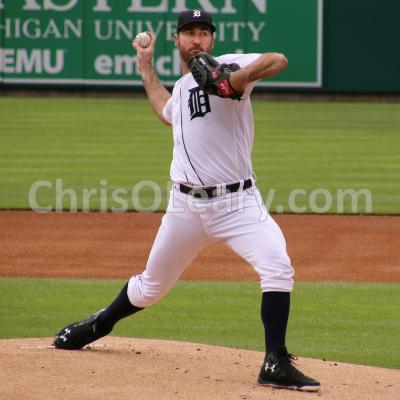 Pitching instruction is moving in a "more is more" direction.
Pitching instruction is moving in a "more is more" direction.
Instructors seem to be trying to impress people with huge volumes of information and tens or even hundreds of drills.
The problem -- as I know from my own experience and from talking and listening to parents and new coaches -- is that, instead of being impressed, most people are feeling overwhelmed, and increasingly so. What most people want, at least to start, is a 30,000 foot overview of pitching, not to immediately get down into the weeds.
Knowing that I literally wrote the book on the elevator pitch, one day at a family dinner my brothers challenged me to put together an elevator pitch for pitching.
The Epidemic is my full-length, detailed discussion of the baseball pitcher injury epidemic, but toward the end of this piece I discuss some of the more relevant topics...
Chris O'Leary's Pitching Primer
While I presently spend most of my time thinking, talking, and writing about hitting mechanics, I got my start in baseball instruction researching pitching mechanics. I didn't want what happened to me to happen to my boys, both of whom are pitchers.
Keeping it Simple
When it comes to the basics of teaching pitching, I try to keep things EXTREMELY simple, especially to start.
1-Word Pitching Clinic
If you asked me to give a pitching clinic, but limited me to one word, I'd have to choose this word.
Patience.
I can't tell you how many pitchers I know and/or have worked with who threw in the mid-90s in high school and, now that I know them in college of the pros, are just trying to get back to 90 after experiencing an injury.
The body isn't designed to handle the rapid velocity increases that are being sold.
1-Pitcher Pitching Clinic
If you asked me to give a pitching clinic, but limited me to discussing just one pitcher, that pitcher would be Justin Verlander.
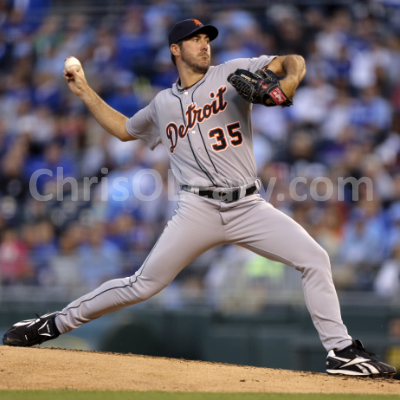
Justin Verlander
I believe Justin Verlander has the best pitching mechanics of any active pitcher, and his return to those pitching mechanics explains his recent return to dominance.

Miles Mikolas
I am a fan of Miles Mikolas of the Cardinals, but he hasn't demonstrated both Dominance and Durability.
Yet.
1-Picture Pitching Clinic
If you asked me to give a pitching clinic, but limited me to one slide, this picture would be on that slide.

Justin Verlander
The reason I like this picture so much is because it illustrates a number of things...
- That I think are important.
- Are being coach out of kids.
1-Phrase Pitching Clinic
If you asked me to give a pitching clinic, but limited me to one phrase, I'd have to choose this phrase.
Pitching is throwing with less margin for error.
As a result, there is considerable overlap between what I teach in terms of pitching in throwing. In fact, I even go so far as to teach girls how to pitch like baseball players.
And that means, if you want to produce good pitchers, you first need to produce good throwers.
1-Sentence Pitching Clinic
If you asked me to give a pitching clinic, but limited me to one sentence, I would say the following.
Focus on the glove and let it rip.
I once ran out of pitchers in a game and had to talk a kid -- who had a good arm but who had never pitched before -- into pitching. Literally the only thing I told him was to, "Focus on the glove and let it rip." He got a couple of strikes on the first batter and then walked him. He did the same for the second batter. He managed to strike out the third batter and started to trust me. He then walked the fourth batter to load the bases, but struck out the next two to close out the game.
1-Concept Pitching Clinic
If you asked me to give a pitching clinic, but only let me talk about one concept, it would have to be this one.
Middle-Up not Top-Down.
People don't know how to teach throwing any more. Instead of teaching pitchers to throw with their hips, I see more and more throwing and pitching "gurus" teaching a top-down, glove-driven movement pattern that runs counter to how the body naturally moves and moves best.
Chris O'Leary's 10-Minute Pitching Clinic
There are a number of things I focus on when talking to pitchers of all ages, after I discuss all of the topics above.
Jeff Passan's "The Arm"
I have discussed Jeff Passan's The Arm at length, but the gist is he's "That Dad" and doesn't want to feel bad about what he's teaching his son.

Matt Harvey
That led Jeff Passan to flat out lie about my experience with and predictions about pitchers like Matt Harvey.
The Greats Are NOT Just Genetic Freaks
Dominant and durable pitchers aren't genetic freaks.
Instead, as a result of studying dominant and durable pitchers for more than 10 years, I've found they move...
- SIMILARLY to each other.
- DIFFERENTLY than pitchers who can't stay healthy.
The picture below compares the Timing of Tom Seaver, Jose Fernandez, and Nolan Ryan.

Tom Seaver, Jose Fernandez & Nolan Ryan
Notice how, at Foot Plant, the pitching arms of Tom Seaver and Nolan Ryan are UP while Jose Fernandez's pitching arm is FLAT.
The Epidemic
Before I get into what pitchers should do, let me first address the elephant in the room, the pitcher injury and Tommy John surgery epidemic.

Henderson Alvarez
You know how pitchers are throwing harder than they used to? And at younger and younger ages? The root cause of the epidemic lies in the tricks and shortcuts coaches are employing to create those velocity increases.

Walker Buehler
Tricks that can be seen with the naked eye by comparing them to Justin Verlander.
Justin Verlander
These tricks and shortcuts work by overloading the arm. In the short term, that yields a quick and significant velocity boost. In the long term, that dramatically increases the risk of injury.

Andrew Heaney
As a result, if you care about more than just velocity, and are interested in creating starting pitchers and not just relievers, you need to be EXTREMELY careful when it comes to the cues you use or let be used with your pitcher(s).
Timing
While there is still much unsettled debate about whether, why, and which arm actions are problematic, a recent study found that Timing problems do cause injuries.

Justin Verlander's Timing
To stay healthy, it is critical that pitchers' pitching arms get UP -- to what I call the Ready Position -- by Foot Plant.

Sal Romano's Timing
To see this, compare and contrast Sal Romano's position at Foot Plant -- how his pitching arm is FLAT and not UP -- with Justin Verlander's.
Of course it's possible JV is a freak, but I doubt it given such obvious and easy to see differences.
And what the science says.
Flat Arm Syndrome
How can you tell if a pitcher has a Timing problem?
I have found that, if a pitcher's arm is flat when their front foot plants and/or their shoulders start to rotate, the load on the arm, and the risk of injury, increase dramatically.

Dylan Bundy
Why couldn't Mark Prior stay healthy? I'd suggest the very obvious differences between his Timing and Justin Verlander's are relevant.
Mark Prior
While Mark Prior's Inverted W arm action didn't help him -- and likely set him up to fail -- what actually got his arm was his Timing problem..
Ian Anderson
Increasingly, I'm seeing young pitchers who look nothing like Justin Verlander at Foot Plant.
Instead of their pitching arms being UP, their arms are FLAT.
For obvious reasons, I call this Flat Arm Syndrome.
Tommy John Twist
The Tommy John Twist is what too often results from teaching players to Point the Ball at Second Base.

Hunter Harvey
See how Hunter Harvey is Pointing the Ball at Second Base?
And how that's keeping his pitching arm from getting UP on time?
That's bad.
The problem with the Tommy John Twist is it tends to create a Timing problem.
Shohei Ohtani's Timing
Why did Shohei Ohtani break?
See how his front foot is planting but his pitching arm is FLAT and not UP?
Because his pitching arm is thumb-down?
That's bad.
Inverted W
Insisting on playing the role of the Tobacco Institute, Jeff Passan would have you believe the Inverted W is benign.

Nick Tropeano's Inverted W
In truth the Inverted W has and continues to destroy arms due to its tendency to create Timing problems.

Dan Winkler's Inverted W
Dan Winkler broke within a few WEEKS of the publication of Jeff Passan's "The Arm" not because of the HEIGHT of his elbows, but because his pitching arm is FLAT and not UP when his Front Foot planted.
First, Do No Harm
There are a number of cues and positions that people are selling out there that in truth are dangerous and are driving the pitcher injury and Tommy John surgery epidemic. These problematic cues and positions include...
A movement that I call the Tommy John Twist is an example of one such problematic movement pattern that is created by these cues.
Jose Fernandez's pitching mechanics are a perfect example of how and why this happens.
Jose Fernandez
Matt Harvey's pitching mechanics provide another example of an arm action that was ruined by the conventional wisdom about pitching mechanics.

Matt Harvey
Tragically, these cues are too often sold as Proper Pitching Mechanics by organizations like ASMI and the Mayo Clinic when they are anything but.
Drop & Drive or Tall & Fall
The greatest trick Tom House ever played was convincing the world that Tom Seaver and Nolan Ryan moved differently.
That Tom Seaver was a drop and drive pitcher and Nolan Ryan was more tall and fall.
In truth, Tom Seaver and Nolan Ryan moved basically the same.
Pitchers to Study
There are a number of active pitchers who I would, and in many cases have, literally driven hundreds or thousands of miles to see pitch so that I can film them with my high-speed camera.
The best of the best are...
- Aroldis Chapman
- Miles Mikolas
- Justin Verlander
Carlos Martinez has excellent natural pitching mechanics, but the Cardinals keep teaching him some problematic things and I sometimes see things that concern me as he goes out of his natural mechanics and into what the Cardinals think are proper pitching mechanics.

Aroldis Chapman
In terms of the history of the game, pitchers I study obsessively include...
- Mariano Rivera
- Nolan Ryan
- Tom Seaver
In my opinion, Sandy Koufax had perfect pitching mechanics. However, he was also horribly overused and abused, and he makes the case that, no matter how good your pitching mechanics are, overuse will still get your arm.